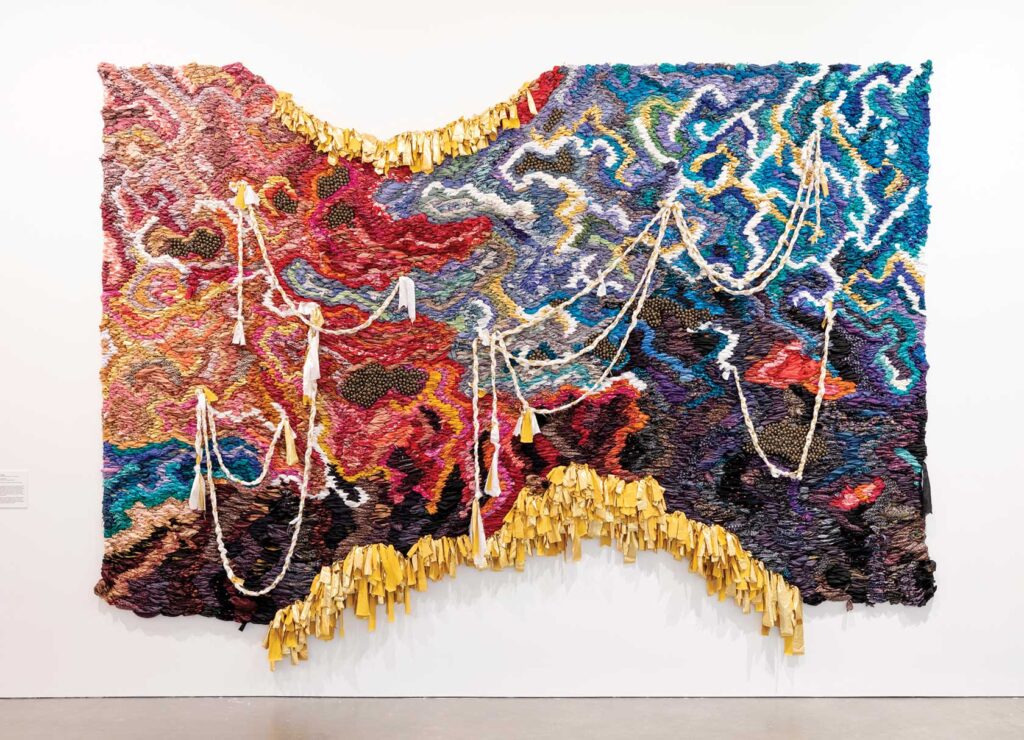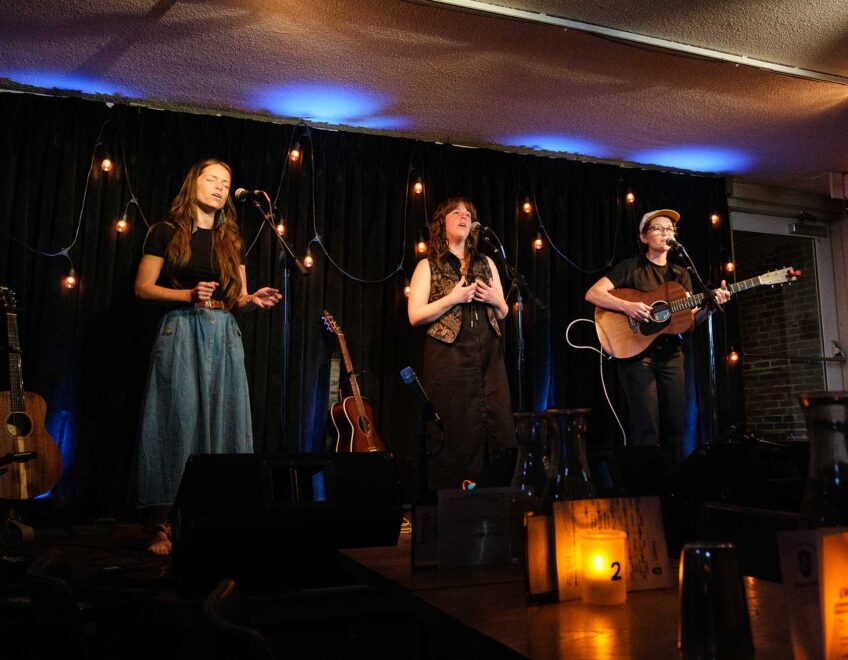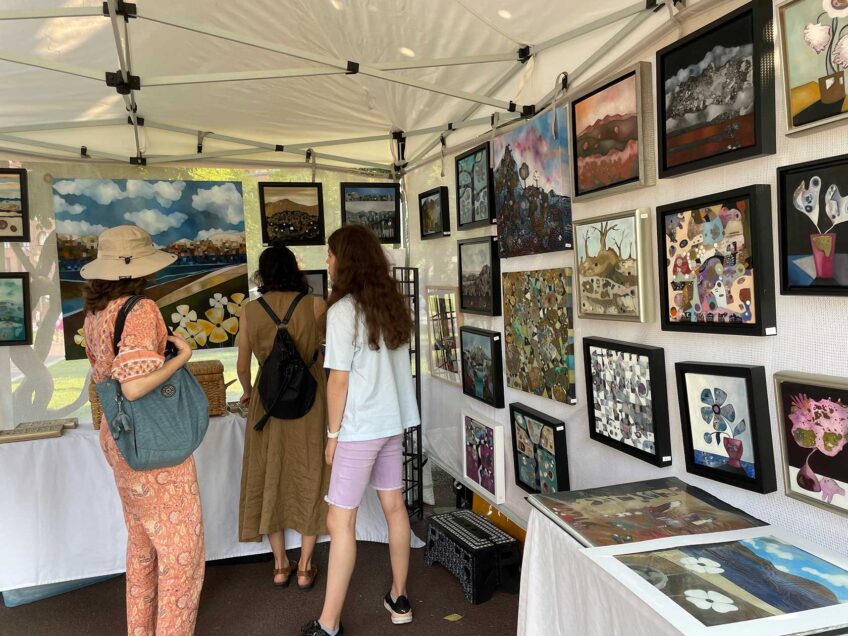ICA exhibit explores the Caribbean diaspora
‘Forecast Form’ challenges common conceptions of island life and art

An intergenerational group of 28 artists with ties to the Caribbean make up “Forecast Form: Art in the Caribbean Diaspora, 1990s–Today” at the ICA Boston. The exhibition aims to break down stereotypes of Caribbean art and to showcase the breadth of the diaspora, a vision of the Caribbean that’s not anchored in location or language.
After so many generations of colonialism, power structures and culture-melding both enforced and organically developed, how can a singular definition be affixed to this region and its artwork?
“The exhibition really sets out through a set of ideas to challenge preconceived notions that people might bring to the exhibition about the Caribbean as being sort of like this tropical paradise,” says curator Jeffrey De Blois, “and [to show] how painful histories and island histories of colonization are often erased when we think about the beauty of the landscape without those attendant histories.”

Installation view, Forecast Form: Art in the Caribbean Diaspora, 1990s–Today, the Institute of Contemporary Art/Boston, 2023–24. PHOTO: MEL TAING
To avoid categorizing the region by geography, language or cultural boundaries, which is both difficult and morally complex, the show focuses instead on the Caribbean diaspora. This includes artists that were born in the region and moved elsewhere, have ancestral ties to the region, live currently in the Caribbean and even a few artists who have spent significant time there despite not having native ties.
“An Ocean Cradle,” by Suchitra Mattai, greets visitors to the exhibition. This large, bright textile piece is woven out of vintage saris with ghungroo bells wrapped into the fabric in some areas. The pattern resembles the ocean shoreline and varying colors give the impression of waves and depth.
“We’re really challenging what preconceived notions people might have about who a Caribbean artist is in the scope of a show about the Caribbean,” says De Blois. Mattai’s family is from Guyana and they represent the South Asian population present in the Caribbean. After Britain abolished slavery in its colonies in 1834, many South Asians were brought to Guyana and Trinidad, and some also to Jamaica, to work as indentured laborers.

Daniel Lind-Ramos, “Figura de Cangrejos,“ 2018–19. Steel, aluminum, nails, palm tree branches, dried coconuts, branches, palm tree trunks, burlap, machete, leather, ropes, sequin, awning, plastic ropes, fabric, pins, duct tape, acrylic. Collection of Benedicta Badía de Nordenstahl. ©Daniel Lind-Ramos. PHOTO: RAQUEL PEREZ-PUIG
Gender commentary is also woven into Mattai’s tapestry. Saris are generally passed down through the matrilineal lineage. The garments themselves carry information about the ancestor that wore it, and women are often the carries of family histories. This textile installation carries the history of South Asian immigrants in the Caribbean.
Land, body and weather are persistent themes throughout the show. A connection is often illustrated between the experiences of the land and the body and how both parties hold that information, and at times that trauma, in different ways. In the Caribbean, where weather can be both a blessing and a wielder of destruction, the land and the people in it feel those wind and water shifts deeply.
“Sugar/Bittersweet,” an installation by María Magdalena Campos-Pons on loan from the Ethelbert Cooper Gallery of African & African American Art at Harvard, shows a forest of Yoruba spears emerging from wooden African and Chinese stools. Slid onto each spear are varying numbers of circular discs made of different kinds of sugar, from white unrefined and brown sugar to dark molasses.
Campos-Pons is from Cuba, where a large part of the Black population has ties to the Yoruba people in West Africa. Here Campos-Pons explores the experience of enslaved and indentured individuals, both African and Chinese, who were forced to labor in sugar plantations on the island.
“It’s a very powerful image,” says De Blois. “There is the upward thrust of the sphere that makes each of these look like a kind of warrior unto themselves.”
There are a number of video installations in the exhibit, and the sounds from those works follow viewers throughout the space. Walking through, the forceful whip of the wind, the consistent drum of rain and the sound of fruit bouncing on a tin roof serve to ground audiences not just visually but auditorily in the Caribbean region.
“Forecast Form” was originally curated by the Museum of Contemporary Art Chicago and was reimagined for the ICA by De Blois. There are two artists in the show with ties to the Boston area: Alia Farid, a Kuwaiti-Puerto Rican artist who is currently a fellow at the Harvard Radcliffe Institute, and Lorraine O’Grady, a Boston native with Jamaican and African heritage and a Radcliffe Institute alumnus.
Jill Medvedow, the ICA’s Ellen Matilda Poss director, says, “‘Forecast Form’ is a far-reaching, stimulating exhibition of art from the Caribbean and its diaspora … it is full of new ideas: formal, conceptual and experiential.”

Teresita Fernández, Manigua(Mirror), 2023. Solid charcoal, black sand, and mixed media on aluminum panel. 91 × 225 × 2 inches (231.1 × 571.5 × 5.1 cm). Courtesy the artist and Lehmann Maupin, New York, Hong Kong, Seoul, and London. © Teresita Fernández. PHOTO: Daniel Kukla
Some works had to be cut and reconfigured for the ICA’s space, but De Blois only added one work: “Manigua (Mirror)” by Teresita Fernández. That is the final work in the show, a large mixed-media piece created with charcoal, black sand and other materials on an aluminum panel. Here Fernández creates a dense tropical rainforest, and through the black trees visitors can just glimpse their own reflections.
The ICA exhibition begins with Mattai’s woven image of the shoreline and ends with guests walking out of the show to a view of the Boston Harbor outside of the ICA’s floor-to-ceiling glass windows.
“People maybe have that moment to meditate how the Atlantic Ocean connects Boston in a physical way to the Caribbean,” says De Blois. “But also to think about how many Caribbean people live in Boston and our own relationship to these histories that have been explored throughout the exhibition.”
The show runs through Feb. 25, 2024. Admission to the ICA and this exhibition are free every Thursday from 5-9 p.m., with advance registration for tickets required.







